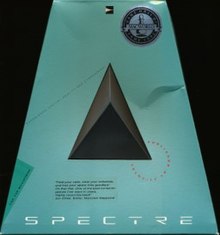
SimCity, also known as Micropolis or SimCity Classic, is a city-building simulation video game developed by Will Wright and released for a number of platforms from 1989 to 1991. SimCity features two-dimensional graphics and an overhead perspective. The objective of the game is to create a city, develop residential and industrial areas, build infrastructure and collect taxes for further development of the city. Importance is put on increasing the standard of living of the population, maintaining a balance between the different sectors, and monitoring the region's environmental situation to prevent the settlement from declining and going bankrupt.

Lemmings is a puzzle-platformer video game originally developed by DMA Design in Dundee, Scotland and published by Psygnosis for the Amiga in 1991 and later ported for numerous other platforms. The game was programmed by Russell Kay, Mike Dailly and David Jones, and was inspired by a simple animation that Dailly created while experimenting with Deluxe Paint.

Arkanoid is a 1986 block breaker arcade game developed and published by Taito. In North America, it was published by Romstar. Controlling a paddle-like craft known as the Vaus, the player is tasked with clearing each formation of colorful blocks, accomplished by deflecting a ball towards it without letting it leave the playfield. Some blocks contain power-ups that have various effects on the player, such as increasing the length of the Vaus, creating several additional balls, or turning the Vaus into a laser cannon.
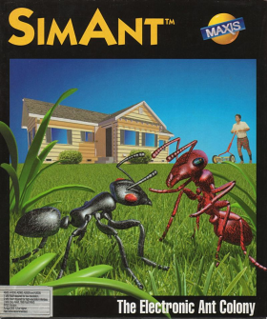
SimAnt: The Electronic Ant Colony is a 1991 life simulation video game by Maxis and Maxis's third product, focusing on ants. It was designed by Will Wright. In 1992, it was named "Best Simulation Game" at the Software Publishers Association's Codie awards. SimAnt was re-released in 1993 as part of the SimClassics Volume 1 compilation alongside SimCity Classic and SimLife for PC, Mac and Amiga. In 1996 SimAnt alongside several of Maxis' simulation games were re-released under the Maxis Collector Series with greater compatibility with Windows 95 and differing box art, including the addition of Classics beneath the title.

Mario Is Missing! is a 1993 educational video game developed and published by The Software Toolworks for MS-DOS, the Nintendo Entertainment System (NES), and the Super Nintendo Entertainment System (SNES). A Macintosh version was released in 1994. The player controls Luigi, who must travel around the world to find and return stolen treasures as part of a quest to find his brother, Mario, who has been captured by Bowser. Mario Is Missing!, part of a series of educational Mario games, marked Luigi's second starring role in a video game, which would not occur again until 2001, when Luigi's Mansion was released on the Nintendo GameCube.

Battlezone is a first-person shooter tank combat arcade game from Atari, Inc. released in November 1980. The player controls a tank which is attacked by other tanks and missiles. The game is considered to be the "first big 3D success".
A multiplayer video game is a video game in which more than one person can play in the same game environment at the same time, either locally or online over the internet. Multiplayer games usually require players to share the resources of a single game system or use networking technology to play together over a greater distance; players may compete against one or more human contestants, work cooperatively with a human partner to achieve a common goal, supervise other players' activity, co-op. Multiplayer games allow players interaction with other individuals in partnership, competition or rivalry, providing them with social communication absent from single-player games.

Sid Meier’s Pirates! is a video game created by Sid Meier and developed and published by MicroProse in 1987. It was the first game to include the name "Sid Meier" in its title as an effort by MicroProse to attract fans of Meier's earlier games, most of which were combat vehicle simulation video games. The game is a simulation of the life of a pirate, a privateer, or a pirate hunter in the 16th, 17th and 18th centuries.
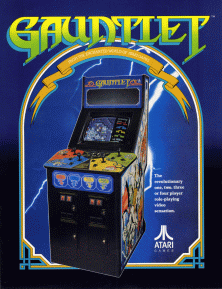
Gauntlet is a fantasy-themed hack and slash 1985 arcade game by Atari Games. It is noted as being one of the first multi-player dungeon crawl arcade games. The core design of Gauntlet comes from Dandy, a 1983 Atari 8-bit family dungeon crawl, which resulted in a threat of legal action.

Might and Magic Book One: The Secret of the Inner Sanctum is an early role-playing video game, first in the popular and influential Might and Magic franchise. It was released in 1986 as New World Computing's debut, ported to numerous platforms and re-released continuously through the early '90s.
Doom is one of the most widely ported first-person shooter video games. Starting with the original MS-DOS PC version, it has been released officially for a number of operating systems, video game consoles, handheld game consoles, and other devices. Some of the ports are replications of the MS-DOS version, while others differ considerably, including modifications to the level designs and monsters, with some ports offering content not included in the original MS-DOS version.
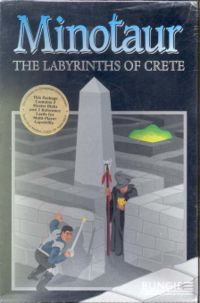
Minotaur: The Labyrinths of Crete is a 1992 role-playing adventure video game for Macintosh by Bungie; produced by Jason Jones and Alex Seropian. The game distinguished itself from other games of its time by including a multiplayer mode that functioned over the AppleTalk protocol or Point-to-Point Protocol. A single-player exploration mode was also available, however this mode had no end goal and was useful to discover how the various items found in the maze operated. The game originated in 1988 as an Apple ][ game played over a modem between two opponents, but was never officially released on that platform.

Spaceward Ho! is a turn-based science fiction computer strategy game that was written by Peter Commons, designed by Joe Williams (Joedelta) and published by Delta Tao Software. The first version was released in 1990, and further upgrades followed regularly; the current version, 5.0.5, was released on July 8, 2003. It has received wide recognition in the Macintosh community, for example being inducted into the Macworld Game Hall of Fame.

Sherlock Holmes: Consulting Detective is a full motion video game based on a tabletop game-gamebook hybrid which had the same name. It was originally developed by ICOM Simulations for the FM Towns computer and later ported to DOS, Apple Macintosh, Commodore CDTV, TurboGrafx-CD, Sega CD and Tandy Video Information System with all versions being distributed on CD-ROM. The game was re-released as a DVD for use with a standard DVD player and television in 1999. A high resolution and re-mastered version of the game for iPad, Microsoft Windows, and OS X was released on September 18, 2012.

Stellar 7 is a first-person shoot 'em up tank simulation video game based on the arcade game Battlezone in which the player assumes the role of a futuristic tank pilot. The game was originally created by Damon Slye for the Apple II and Commodore 64 in 1983. It was followed by three sequels, Arcticfox (1986), Nova 9: The Return of Gir Draxon (1991), and Stellar 7: Draxon's Revenge (1993), and was remade in the early 1990s for the 16-bit computers.

Castles II: Siege and Conquest is a 1992 real-time strategy game for the MS-DOS, developed by Quicksilver Software and published by Interplay Productions. Castles II is the sequel to the 1991 game Castles. Ports for the Amiga CD32, FM Towns, NEC PC-9801 were released in 1993. DOS CD-ROM version and Macintosh port were released in 1994. The Macintosh version of the game was published by Interplay's MacPlay brand name. GOG.com released an emulated version for Microsoft Windows in 2008.
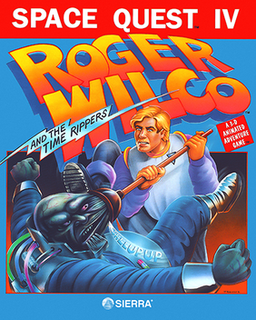
Space Quest IV: Roger Wilco and the Time Rippers is a 1991 graphic adventure game by Sierra On-Line. It was released on floppy disks on March 4, 1991, and released on CD-ROM in December 1992 with full speech support and featuring Laugh-In announcer Gary Owens as the voice of the narrator. It featured 256-color hand painted graphics and a fully mouse-driven interface. It was one of the first games to use motion capture animation. The game cost over US$1,000,000 to produce and sold more than its three predecessors combined. An Atari ST version was announced via Sierra Online's magazine, Sierra News Magazine, but was later canceled.

Oids is a video game released in 1987 by FTL Games. The game was originally released on the Atari ST, followed by a conversion for the Apple Macintosh. A version for the Commodore Amiga was eventually released in 2014, due to reverse engineering the ST version. The Atari ST version, created entirely by Dan Hewitt, was a cult favorite in the UK, where it received rave reviews.

Dive Bomber is a video game developed by Acme Animation in 1988 for the Commodore 64. It was ported to Atari ST, Apple II, ZX Spectrum and MS-DOS.

Alternate Reality: The City is a video game published by Datasoft, the first game in the Alternate Reality series. It was created by Philip Price, and was released in 1985. Gary Gilbertson created the music.
